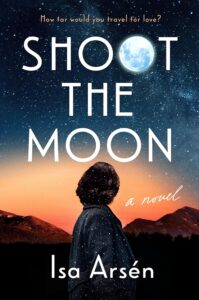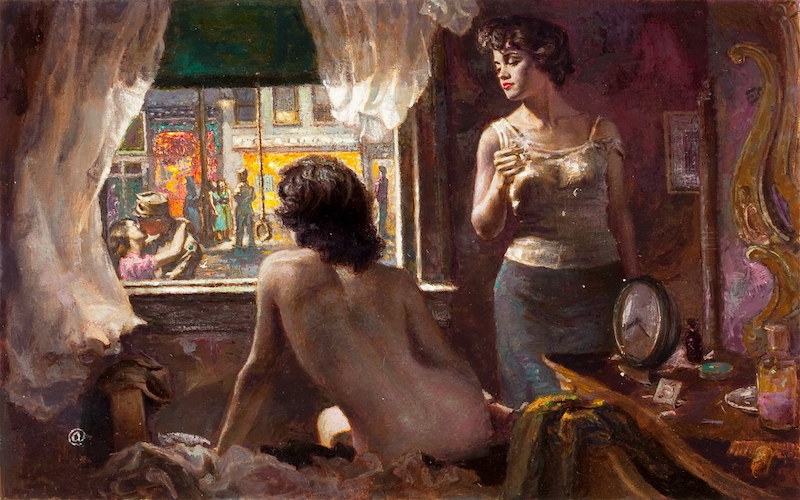In college, I had a part-time job clerking the front desk of the music school dean’s office. Between Xeroxing and answering phone calls, most of my shift was spent reading. While taking my first Classics course on ancient mythology, my very keen-eyed professor recommended I read Mary Renault.
I tore through The Last of the Wine and The King Must Die, and while I waited for the single copy of The Mask of Apollo to come back to the university library, I bided my time with the only other one left in the stacks: The Charioteer. I devoured the story of Laurie and Ralph three times through before returning it. I still haven’t gotten around to The Mask of Apollo.
There hadn’t been anything since I inhaled stacks of cellophane-covered books in my childhood den when I was first falling in love with reading that had sucked me down so thoroughly. I hurled myself down the rabbit hole of what else I could find that read like Renault—urgent yet delicate, shot through with sharp humor and at once aching with its own need, cavalier while also being deeply refined—and discovered the wonderful world of pulp fiction.
The term “pulp” comes from the fact these stories were originally considered low art. The paper on which they were printed was made from wood pulp, the dregs of the printing press, and the publications pointed to many of the burgeoning 20th century’s own dregs—vivid depictions of harrowing labor violations, political corruption, violent misogyny, and hideous racial caricatures.
Pulp magazines were the next evolution of the dime novels of the 1800s: high-passion adventure stories and romances that smacked with heart. Despite their racier subject matter, or more likely because of it, “the pulps” were wildly popular in their fifty-year heyday. The cost accessibility and variety of stories included in the most widespread publications helped found much of what is still considered canon in modern science fiction, noir, horror, and romance stories.
However, after the second World War, the rise of paperbacks, comic books, and the rediversion of many a magazine’s budget to producing higher-quality “slicks”—the glossy magazines we’re used to seeing today—largely dried up the demand for dedicated pulp publications. But those writers were still writing, and continued bringing the morays of pulp into the broader publishing spectrum. Enter Patricia Highsmith.
In the introduction to the bio-graphic novel Flung Out Of Space (which should be on everyone’s required reading list), author Grace Ellis says of Highsmith: “[She] was an appalling person. She was deeply anti-Semitic, racist, and misogynistic, even by the standards of her time. …By all accounts, Pat had a magnetic personality and could be charming when she wanted to be, and in that way, she embodies the characters she is most famous for writing: charismatic sociopaths who are worryingly easy to root for.”
Highsmith is best known for different things depending on who you ask. Her first novel, Strangers on a Train, was adapted for film by Alfred Hitchcock to critical acclaim in 1951. But many of today’s readers know her by way of Carol (originally titled The Price of Salt) and its 2015 film adaptation by Todd Haynes and Phyllis Nagy. Carol was first published under the pen name Claire Morgan to avoid Highsmith being earmarked as “a lesbian-book writer” and circulated by none other than Coward-McCann, a then-imprint of my own publisher G. P. Putnam’s Sons.
It is the only one of Highsmith’s novels with a happy ending.
I made my way to Highsmith soon after finishing The Charioteer, at the recommendation of a long-defunct blog that kept a list (upsettingly short, at that time) of queer novels in which the main characters aren’t fucking dead by the end. Almost all of them were pulp stories. I read every single book on the list. I had finally found my place.
In the pages of Carol and its contemporaries, you see clearly what I believe to be the core tenet of American pulp fiction: it must have fundamental feelings about women. All the best pulp either tries to kill women, worship women, or both. Is it any wonder Highsmith in all her messy complexity stands as one of the great pulp novelists who ever lived? Her stories relish in drawing both the horrific and the ecstatic from the situations in which she throws her ambiguously-twisted protagonists, modeled intensely by the anger with which she viewed many of the people moving through the world around her. In pulp, everyone is flawed. Nobody is exempt.
The willingness to allow pulp stories to be so delectably camp, not to pull any punches with their explorations of existentialism and sexuality, is inextricable from the genre’s overarching refusal to exist in the straight lines of conventional fiction. I had two reference points for camp when I was young: community theater, and the Catholic Mass.
The core tenet of American pulp fiction: it must have fundamental feelings about women.
(Think about it: the celebrant wears a dress, swings a smoking purse from a silver chain, prays over a gilded book, and sings about it all in an esoteric language.)
I was predisposed to the habit of arch dramatics from the beginning and, combined with my penchant for feeling Everything So Much All The Time, all but primed to resonate from head to toe with the pitch of pulp. Finally, here came a genre that felt perfectly made for me to inhabit.
The lens of pulp is one of inherently violent storytelling. Depending on who you ask, we live an inherently violent existence and perhaps pulp is simply the most honest expression of that agony—there is beauty in the ugliness, if only we let our imaginations run wild enough to find it. The very concept of hysteria slots perfectly into the subgenre: the affected feminine rather than the divine, the reality of anger and mistake-making and very, very big feelings. That’s what makes my heart sing when I see it on the page. I want my stories intimate, yet big; tidily-plotted, yet endlessly scattered. I want a good time. I want pulp: the place that asks “what if” and proceeds to gun the engine to 80 without waiting to hear the answer.
Pulp fiction grows straight from the soul—it is the distilled essence of our every craving to act and cry and fear and fuck and take what’s ours from the machine as we hold the mirror up to it, and it gives us a safe outlet through which to shunt all that aimless wanting. I’ve found peace in these stories deeper than any well I’ve ever dredged. I hope you’ll join me. It’s fun down here with the woodchips.
__________________________________

Isa Arsén’s novel Shoot the Moon is available from G.P. Putnam’s & Sons.
